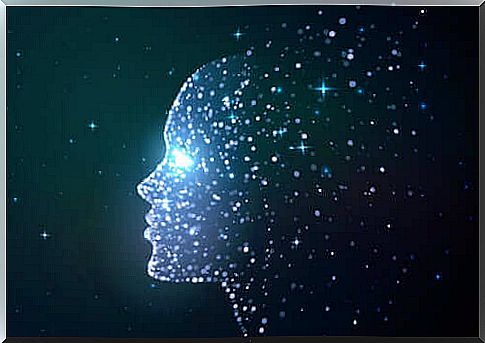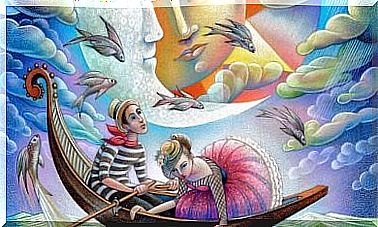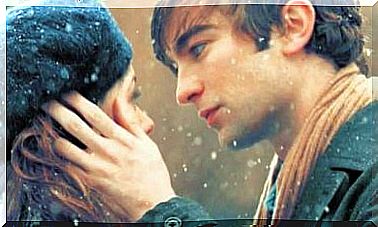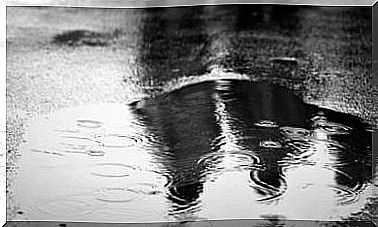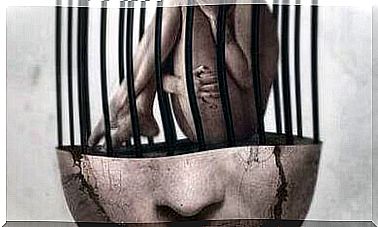Our Brains Are Fooling Us: Persinger’s Experiment

Persinger’s experiment tries to show us that our brains are fooling us. We often trust our senses and we make mistakes. Indeed, reality often plays a trick on us precisely because of the confidence we have in our perception as well as the complexity of our environment.
We confuse people. We see things that do not exist and we feel accompanied when there is no one. Hallucinations are conceived biologically as an alteration of perception. This alteration has a deep cerebral basis, as there are areas of maximum sensory processing.
The feeling of presence: the Persinger field
Dr. Persinger’s studies aim to show that many phenomena interpreted as spiritual are in fact cerebral. The sensation of presence is the phenomenon of feeling or perceiving another person or entity, when in reality there is nothing.
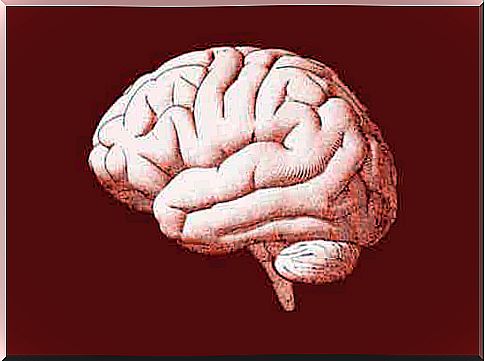
A phenomenon linked to various pathologies
The main one is sleep paralysis, where the numerous attacks make the person feel that something is haunting them. This is also found in other entities, such as epilepsy or neurodegenerative diseases. For the latter, this is explained by the alteration of brain structures in connection with perception.
The theory of vector hemisphericity
It is based on the fact that the construction of the “me” is a process in which the two cerebral hemispheres participate in different ways, jointly and unconsciously. First, the left hemisphere provides the linguistic and symbolic meaning of “me” (internal dialogue).
According to Persinger, there is an intrusion of the right “me” sense into the left hemisphere during the processes that alter interhemispheric connectivity. This intrusion would cause our left hemisphere to interpret the meaning of the right “me” as the presence of another person, who is nothing other than ourselves.
The brain areas involved in the phenomenon
- Parietal lobe. More precisely, the motor and perceptual association zone. What is known as Penfield’s homunculus, where each organ and part has its own area in the cerebral cortex.
- Temporal lobe. This is the lobe where auditory stimuli are integrated and where language is processed. The union between the parietal lobe and the temporal lobe is closely linked to perception errors.
- Occipital lobe. This is the lobe in charge of vision. Alterations in the other two lobes cause visual errors.
Persinger’s experience
Dr Michael Persinger knew the difficulty of proving his theory. Scientific progress has, however, confirmed his theses.
He believed that he himself could cause impaired brain connectivity, a process that would cause one hemisphere to intrude into the other. The instrument chosen for the experiments was transcranial magnetic stimulation.
God’s helmet
Based on previous research in this regard, Persinger designed a helmet with four pairs of selenoids that magnetically stimulate the temporal lobe. He called this helmet “the helmet of God”.
The experiment took place in a dark room, where the participants were blindfolded. At the end, the volunteers were asked if they had sensed a strange presence, sound or smell. Many of them claimed to have felt something, when in reality there was nothing.
Elements of the experience
- Sensory deprivation. The inability to see has been shown to increase longwave brain activity. This activity is very present in sensory failures.
- Magnetic stimulation. General brain connectivity can be disrupted by mildly exciting neurons in the cerebral cortex. The estimate was also made at the junction of the temporal and parietal lobe, an area involved in these processes.
- Relaxed atmosphere. A distraction-free environment induces relaxation. In conjunction with sensory deprivation, the patient’s imagination and uncertainty soars, causing false positives.
The results of the experiment
Persinger performed this experiment on several occasions. The vast majority of subjects felt very strange sensations. Some reported feeling like another person was present, others felt strange smells or heard voices. It is important to emphasize that each person was completely alone in the room.
To keep in mind
Persinger’s experiments are not without problems and salient aspects. Among them we can highlight:
- Fantastic subjects. Subjects who are generally open to mystical experiences have high expectations. Therefore, they can be so predisposed to something going on that they end up provoking it.
- Meditation. In another Persinger experiment, people accustomed to meditation more easily reached states of relaxation and therefore impaired perception.
- Beliefs. Persinger also showed that religious people were more likely to interpret the phenomenon as a mystical apparition. They also gave more details on what they claimed to perceive.
- Culture. The mental form attributed to perceptual alterations is closely linked to the subject’s culture. Topics from cultures with greater interest and more stories on the theme will be more likely to present the phenomenon.

The conclusions of Persinger’s experiments
Persinger has shown that stimulation of a specific area of the brain causes perception failures. This suggests that a phenomenon that we often think of as mystical finds its explanation in the brain. He also demonstrated that the alteration of cerebral areas related to perception has a great influence on hallucinations.
Dr. Persinger’s findings help explain why people with brain damage, epilepsy or dementia have a high rate of these phenomena. The structural alteration of the brain causes a desynchronization between the two hemispheres, and consequently errors of perception.
Through his experiments, Persinger takes a critical look at hallucinations, often tinged with personal beliefs. His experience allows us today to study minor and everyday hallucinatory phenomena from a different angle.
